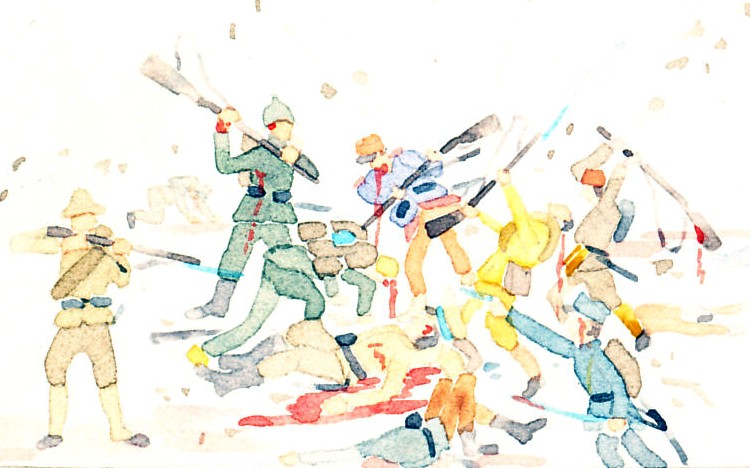Germany and King Ferdinand of Bulgaria squeeze pincers on Serbia at the city of Nisch. Germany and Austria-Hungary began their joint invasion across Serbia's norther border on October 6, 1915. Bulgaria entered the war on the side of the Central Powers on October 14, and invaded Serbia from the east. Nisch fell to the invaders on November 5.
The Serbia capital of Belgrade on the Danube and the city of Monastir on the Greek border are marked with initials.
Handmade postcard map dated November 12, 1915.

Serbien Kopot, Kapot, Kaput (?)
[Serbian King] Peter bankraft, bankratt (?)
Marked are the Adriatic and Aegean Seas, Greece, Albania, Montenegro, Bulgaria, Rumania, Hungary.
Deliblat (?)
Reverse:
Unsern tapferen Truppen im Felde gewidmet von der Tintenfabrik Eduard Beyer, Chemnitz i/s - Teplitz i/s.
Dedicated to our courageous forces in the field from the ink factory Edward Beyer, Chemnitz i/s - Teplitz i/s
Other views:
Larger, Back
